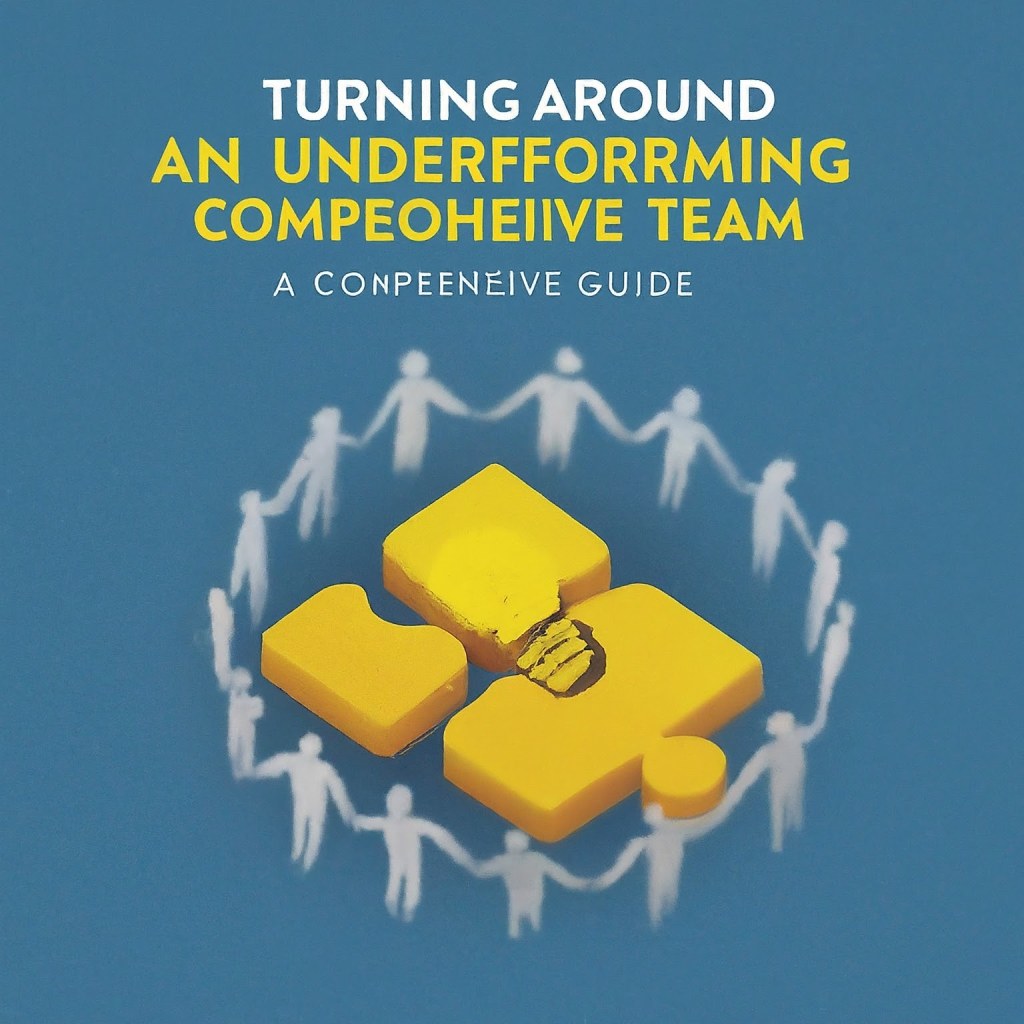Sanjay Mohindroo

Discover actionable strategies to transform an underperforming team into a high-performing unit with clear goals, open communication, and a positive culture.
Every leader dreams of guiding a team to peak performance, achieving remarkable goals, and exceeding expectations. However, many teams face periods of underperformance. The key to turning things around lies in strategic leadership, empathy, and proactive measures. This guide will equip you with actionable steps to transform your team into a motivated, cohesive, and high-performing unit. #Leadership #TeamBuilding #Success
Assessing the Current Situation: Engage in Active Listening
Understanding the root causes of underperformance is the first step toward resolution. Engage in active listening by holding one-on-one meetings and team discussions to gather insights. #ActiveListening #TeamFeedback
Example: Jane, a project manager, noticed a dip in team morale. She conducted individual meetings, asking open-ended questions like, “What challenges are you currently facing?” and “How do you think we can improve our workflow?” This helped her uncover underlying issues such as lack of recognition and unclear goals. #Analyze the Feedback
Identify common themes and specific issues mentioned by team members. This analysis will provide a clear picture of the team’s challenges and areas needing improvement. #FeedbackAnalysis #ProblemSolving
Example: Feedback revealed that many team members felt overwhelmed by unrealistic deadlines. Jane used this information to reassess project timelines and workload distribution.
Reestablishing Trust and Open Communication: Transparent Communication
Address the issues openly with the team. Share what you’ve learned from the feedback and outline your commitment to making improvements. Transparency builds trust and shows that you value their input. #Transparency #TrustBuilding
Example: After gathering feedback, Jane held a team meeting to discuss the findings and proposed changes. This fostered a culture of transparency and mutual respect. #Regular Check-ins
Implement regular check-ins and open forums where team members can express their thoughts and concerns. This continuous feedback loop helps maintain transparency and trust. #OpenCommunication #TeamCheckins
Example: Weekly team huddles were introduced in Jane’s team to discuss progress, roadblocks, and new ideas. These sessions kept communication lines open and active.
Setting Clear Goals and Expectations: Define Clear Objectives
As a leader, set clear, achievable goals that align with the team’s strengths and the company vision. Clear objectives provide direction and purpose. #GoalSetting #ClearObjectives
Example: Jane’s sales team, struggling with targets, set a clear objective: “Increase monthly sales by 15% through enhanced customer engagement strategies.” #SMART Goals
Ensure that the goals are Specific, Measurable, Achievable, Relevant, and Time-bound (SMART). This clarity helps keep the team focused and motivated. #SMARTGoals #TeamSuccess
Example: Jane’s product development team set a goal to “launch a new feature within three months, increasing user engagement by 20%.”
Fostering a Positive and Inclusive Culture: Recognize and Reward
Acknowledge individual and team accomplishments. Recognition fosters motivation and reinforces positive behavior. #EmployeeRecognition #PositiveReinforcement
Example: In a software development company, employees received shout-outs during weekly meetings for their contributions, boosting morale and encouraging continued excellence. #Encourage Collaboration
Promote teamwork by organizing team-building activities and collaborative projects. This helps break down silos and fosters a sense of unity. #TeamCollaboration #TeamBuildingActivities
Example: A design agency held monthly workshops where team members from different projects collaborated on creative challenges, fostering a sense of unity and shared purpose.
Providing Development Opportunities: Professional Growth
Invest in the professional development of your team members. Offer training sessions, workshops, and opportunities for career advancement. Empowered employees are more motivated and engaged. #ProfessionalDevelopment #EmployeeGrowth
Example: A tech firm offered its employees access to online courses and certifications, encouraging them to enhance their skills and apply new knowledge to their projects. #Mentorship Programs
Implement mentorship programs where experienced team members can guide and support newer or struggling colleagues. This not only aids in skill development but also strengthens team bonds. #Mentorship #SkillDevelopment
Example: In a consulting firm, senior consultants were paired with junior colleagues for mentorship, helping them navigate challenges and grow professionally.
Addressing Conflicts Constructively: Conflict Resolution
Address conflicts promptly and fairly. Use a collaborative approach to resolve issues, ensuring that all parties feel heard and respected. #ConflictResolution #TeamHarmony
Example: In a publishing house, two editors clashed over editorial decisions. The manager facilitated a mediation session where both parties could express their viewpoints and find common ground. #Promote Respect
Foster a culture of mutual respect and understanding. Encourage team members to appreciate diverse perspectives and work towards common goals. #RespectAtWork #InclusiveCulture
Example: A financial services company introduced a code of conduct emphasizing respect and collaboration, ensuring that all interactions were professional and considerate.
Leveraging Strengths and Delegating Effectively: Identify Strengths
Understand the individual strengths of your team members and assign tasks that align with their skills and interests. This not only enhances productivity but also job satisfaction. #StrengthsBasedLeadership #EffectiveDelegation
Example: In a marketing team, a member skilled in data analysis was assigned to handle campaign metrics, while a creative thinker focused on content creation. #Delegate Wisely
Delegate responsibilities effectively, ensuring that workloads are balanced and everyone has the opportunity to contribute meaningfully. #WiseDelegation #BalancedWorkloads
Example: A project manager delegated tasks based on team members’ strengths, ensuring that each person works on areas where they excelled, leading to higher efficiency and satisfaction.
Leading by Example: Demonstrate Commitment
Show your commitment to the team’s success through your actions. Be approachable, supportive, and willing to go the extra mile. #LeadByExample #LeadershipCommitment
Example: When a critical deadline approached, a manager in a manufacturing company stayed late and worked alongside the team, demonstrating dedication and solidarity. #Positive Attitude
Maintain a positive attitude, especially during challenging times. Your optimism can inspire and motivate your team to persevere and perform. #PositiveLeadership #InspireYourTeam
Example: A startup founder faced a significant setback but framed it as a learning opportunity for the team, focusing on what could be improved for future success.
Monitoring Progress and Adapting: Track Progress
Regularly monitor the team’s progress toward their goals. Use key performance indicators (KPIs) to measure success and identify areas for improvement. #MonitorProgress #KPIs
Example: A retail company used project management software to track sales targets and team performance, allowing for real-time adjustments and support where needed.
Be Flexible
Be willing to adapt your strategies based on feedback and changing circumstances. Flexibility is key to addressing evolving team dynamics and challenges. #FlexibleLeadership #AdaptToChange
Example: When a marketing campaign didn’t yield the expected results, the team regrouped to brainstorm alternative strategies, demonstrating agility and responsiveness.
Celebrating Successes: Celebrate Milestones
Take the time to celebrate both small wins and major achievements. This not only boosts morale but also reinforces a culture of success and continuous improvement. #CelebrateSuccess #TeamAchievements
Example: After completing a major project, an architectural firm organized a celebratory dinner to acknowledge the hard work and dedication of the team.
Team Outings and Rewards
Organize team outings, events, or reward systems to celebrate successes. This helps in strengthening team bonds and providing a well-deserved break from work. #TeamOutings #EmployeeRewards
Example: A tech startup introduced a quarterly reward system where top performers were recognized with gift cards and team outings, boosting morale and motivation.
Transforming a team into a productive and cohesive unit is an ongoing process that requires patience, empathy, and strategic action. As a leader, fostering open communication, setting clear goals, and creating a positive work environment can inspire your team to achieve their best. Remember, your attitude and actions set the tone for the entire team. Lead with confidence and compassion, and watch your team thrive. #TeamTransformation #ConfidentLeadership #CompassionateLeadership






Leave a comment